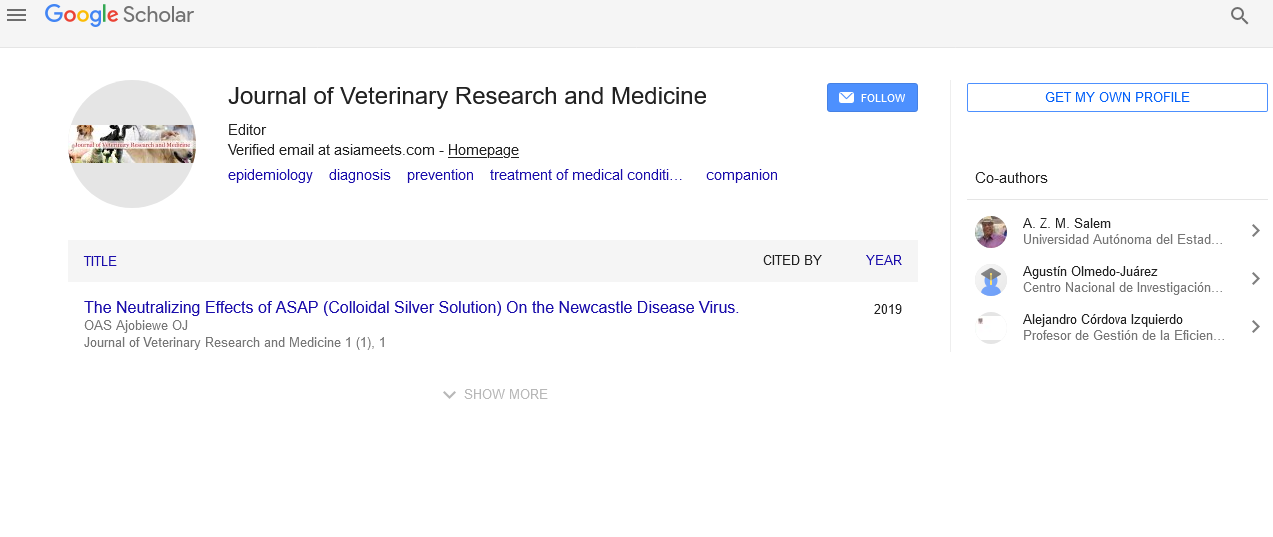An overview on amphibians
Received: 03-Dec-2021 Accepted Date: Dec 17, 2021; Published: 24-Dec-2021
Citation: Savariraj R. An overview on amphibians. J Vet Res Met. 2021;3(3):1.
This open-access article is distributed under the terms of the Creative Commons Attribution Non-Commercial License (CC BY-NC) (http://creativecommons.org/licenses/by-nc/4.0/), which permits reuse, distribution and reproduction of the article, provided that the original work is properly cited and the reuse is restricted to noncommercial purposes. For commercial reuse, contact reprints@pulsus.com
Description
Amphibians start their larval life cycle stage in water, amphibians breath through gills, before completing metamorphosis to become lung-breathing terrestrial till amphibians reach adult stage. Still, marked variation in the respiratory system exists between species and life stages, including respiration via skin, mucous membranes, gills, and lungs. Amphibians have a non-keratinized, thin epidermis, permitting for transdermal respiration, fluid absorption, and osmoregulation. This provides unique fluid and medication discharge options via immersion treatment in numerous species which are different from each other. The subcutaneous space is approximately connected and contains large lymphatic sacs. Within the lymphatic system, there are lymphatic hearts segmentally arranged that need to facilitate lymph movement toward the renal portal veins, where it rejoins systemic circulation in amphibians. All post metamorphic amphibians are carnivores, although the diet of larval anurans is extremely variable. Utmost anuran species need prey movement to trigger feeding behavior in contrast, caudata and gymnophiona use olfactory cues, touch and movement to locate food. Fat storage occurs in the gonadal fat bodies for most of the species, which have finger-suchlike projections in the coelomic cavity. Frogs have teeth only in the upper jaw; toads have none. Teeth aren't normally used for chewing but simply for prehending food. These creatures swallow their food at instant. Full neoteny is used to describe species that remain in their larval form for utmost of their life, similar as the ambystoma mexicanum. Sexually mature adults of this species externally resemble gilled naiads. Because neotenic species don't suffer metamorphosis, they must remain permanently in an aquatic atmosphere. The amphibian immune system is inadequately understood for theaxolotl. Amphibians have paired mesonephric kidneys and excrete nitrogen waste initially as urea. Uric acid and urea are also produced by some terrestrial and arboreal species. The musculoskeletal system of anurans is uniquely modified with a pelvic girdle attached to ribs and vertebrae, known as the urostyle, toassist with salutatory locomotion. Most of the caudatan species have a notable amount of cartilage on joint surfaces. On radiographs, this shouldn't be misinterpreted as metabolic bone disease or open growth plates.
Endolymphatic sacs are unique structures plant down the entire length of the spinal column. These sacs are extensions of the inner ear, contain crystals of calcium carbonate, and function as a calcium storage site. They shouldn't be confused with pathological conditions.
Due to amphibians unique integument and physiology, their metabolism and immune function is uniquely reliant on a stable atmosphere. Infectious and nutritive diseases are common problems in tropical amphibians kept in suboptimal conditions. The range of temperatures necessary for proper metabolism, called the preferred optimal temperature zone, varies among species. The preferred optimal temperature zone of amphibian species is generally lower than the preferred optimal temperature zone of reptilians; caudatan species prefer temperatures mainly lower than anuran species. Water temperature regulation with water chillers and air exertion must be considered for enclosures. Provision of a thermal gradient within a species preferred optimal temperature zone allows most amphibians to self-regulate body temperature.
Enclosures should be spot checked daily with a laser temperature probe, which can be bought at most hardware or pet stores. Amphibians need moisture to be prevented from desiccation. Aquatic amphibians may be accommodated in aquariums with areas for swimming. Terrestrial amphibians need a shallow container of water in the enclosure.
Moisture may also be provided by absorbing small streams, waterfalls or ultrasonic humidifiers into enclosures or by misting frequently with a spray bottle. Organic substrates and refugia that limit water loss can also help give humidity within microhabitats.
Water must be clean and free of toxins such as chlorine, ammonia, nitrite, pesticides and heavy metals. Chlorine can be removed from tap water by placing the water in a container and circulating it through a carbon filter for less than 24 hours before use. Some external water may include chloramines. The chloramine bond must be split with a type of dechlorinating agents, after which water can be filtered with carbon to remove the chlorine.





